You can overlay the images using openCV you can check at OpenCV and here or here
// Read the main background image
cv::Mat image= cv::imread("Background.png");
// Read the mans character image to be placed
cv::Mat character= cv::imread("character.png");
// define where you want to place the image
cv::Mat newImage;
//The 10,10 are the initial coordinates in pixels
newImage= image(cv::Rect(10,10,character.cols,character.rows));
// add it to the background, The 1 is the aplha values
cv::addWeighted(newImage,1,character,1,0,newImage);
// show result
cv::namedWindow("with character");
cv::imshow("with character",image);
//Write Image
cv::imwrite("output.png", newImage);
or you can create it as a watermark effect
Or you can try it in java like merging two images
try using this class
public class MergeImages {
public static void main(String[] args) {
File inner = new File("Inner.png");
File outter = new File("Outter.png");
try {
BufferedImage biInner = ImageIO.read(inner);
BufferedImage biOutter = ImageIO.read(outter);
System.out.println(biInner);
System.out.println(biOutter);
Graphics2D g = biOutter.createGraphics();
g.setComposite(AlphaComposite.getInstance(AlphaComposite.SRC_OVER, 0.8f));
int x = (biOutter.getWidth() - biInner.getWidth()) / 2;
int y = (biOutter.getHeight() - biInner.getHeight()) / 2;
System.out.println(x + "x" + y);
g.drawImage(biInner, x, y, null);
g.dispose();
ImageIO.write(biOutter, "PNG", new File("Outter.png"));
} catch (Exception e) {
e.printStackTrace();
}
}
}

